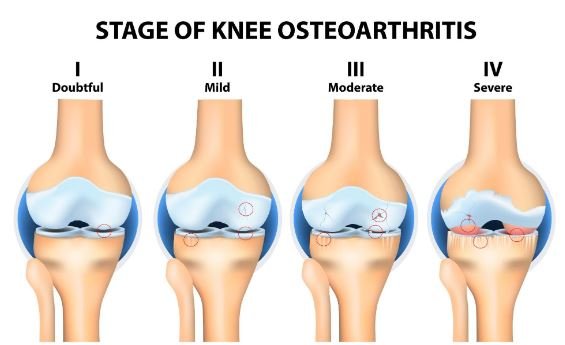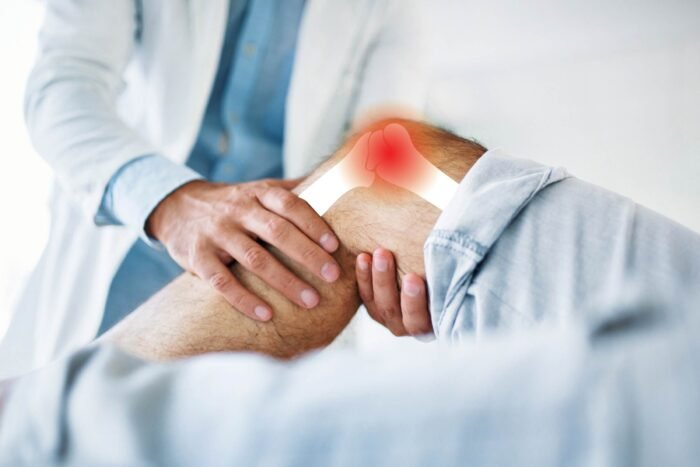What is Osteoarthritis?
Osteoarthritis of the knee is a degenerative joint disease marked by a slow and progressive loss of cartilage, the tough covering that covers the ends of bones in joints. Pain, stiffness, and decreased mobility result from this, especially in joints that support weight. Osteoarthritis cannot be cured, although there are contributing factors such as aging, heredity, abuse of joints, and traumas. Treatment focuses on symptom management using medicine, physical therapy, and lifestyle modifications to improve the affected person’s overall quality of life.
How frequent is knee osteoarthritis?
Knee osteoarthritis is a relatively frequent condition. It will affect 46% of people at some point throughout their lives.
Also Read: What is Back and Neck Arthritis
Symptoms and Causes of Knee Osteoarthritis
Causes:
It is a complex condition with multiple contributing factors. The exact cause of osteoarthritis is often a combination of genetic, biological, and environmental factors. Here are some key factors that can contribute to the development of knee osteoarthritis:
- Age: Osteoarthritis becomes more common with age. The wear and tear on joints over time can lead to the breakdown of cartilage and other joint structures.
- Genetics: There is evidence that genetics plays a role in predisposing individuals to osteoarthritis. If you have family members with osteoarthritis, you may be at a higher risk.
- Gender: Women are more likely than men to develop osteoarthritis, particularly after the age of 50. The reasons for this gender difference are not entirely understood but may be related to hormonal factors.
- Obesity: Excess body weight places additional stress on weight-bearing joints, such as the knees. This increased load can accelerate the degeneration of joint cartilage and contribute to the development of osteoarthritis.
- Joint Injuries or Trauma: Previous joint injuries, such as ligament tears or fractures around the knee, can increase the risk of osteoarthritis. Joint trauma may lead to altered joint mechanics and accelerate the degenerative process.
- Repetitive Stress on the Knee: Activities that involve repetitive stress or strain on the knee joint, such as frequent squatting or kneeling, may contribute to the development of osteoarthritis over time.
- Muscle Weakness: Weakness in the muscles that support the knee can contribute to joint instability and increased stress on the joint surfaces.
- Joint Alignment: Abnormalities in joint alignment, such as being bow-legged or knock-kneed, can affect the distribution of forces across the knee joint and contribute to osteoarthritis.
- Other Medical Conditions: Certain medical conditions, such as rheumatoid arthritis or metabolic disorders, can increase the risk of osteoarthritis.
Symptoms:
Osteoarthritis of the knee can present with a variety of symptoms, and their severity can vary from person to person. Common symptoms of knee osteoarthritis include:
- Pain: Pain is a hallmark symptom of knee osteoarthritis. It often occurs during weight-bearing activities such as walking, standing, or climbing stairs. The pain may be sharp or a dull ache and may worsen after periods of inactivity.
- Stiffness: Stiffness in the knee joint is common, especially after periods of rest or inactivity. Morning stiffness that improves with movement is a typical characteristic of osteoarthritis.
- Swelling: Inflammation of the joint can lead to swelling around the knee. The swelling may be accompanied by warmth in the joint.
- Decreased Range of Motion: As osteoarthritis progresses, the range of motion in the knee joint may become limited. It can be challenging to fully bend or straighten the knee.
- Cracking or Popping Sensation: Some individuals with knee osteoarthritis may experience a cracking or popping sensation within the joint during movement.
- Instability: Weakening of the joint structures, such as ligaments and muscles, can lead to a sense of instability in the knee. This may make the person feel unsteady or like the knee is giving way.
- Difficulty Walking or Climbing Stairs: The pain, stiffness, and reduced range of motion can make walking or climbing stairs difficult for individuals with knee osteoarthritis.
- Muscle Weakness: Pain and limited joint movement can result in muscle weakness in the surrounding areas, which may further contribute to joint instability.
Tests of Knee Osteoarthritis
- X-rays, which can reveal bone spurs and damage to the bone and tissue
- Magnetic Resonance Imaging (MRI) Scan
- Blood tests
- Joint aspiration
How is osteoarthritis of the knee treated?
Injections, surgery, and nonsurgical treatments are possible forms of treatment. Usually, medical professionals explore non-surgical options before recommending surgery.
1. Non-surgical treatments include:
- Maintaining a healthy weight
- Taking painkillers
- keeping a healthy weight in view
2. Surgical treatments include:
- Total knee replacement
- Knee osteotomy
- Partial knee replacement
- Cartilage grafting. Your cartilage repairs itself by using healthy cartilage to fill in gaps.
Prevention of Knee Osteoarthritis
- Sustain a healthy weight.
- Get lots of sleep.
- Run or jog on grass or other soft terrain.
- Use low-impact activities to mix up your training regimen, like cycling or swimming.
- Include some light strength training in your exercise regimen.




I like this blog. knowledgeable Information